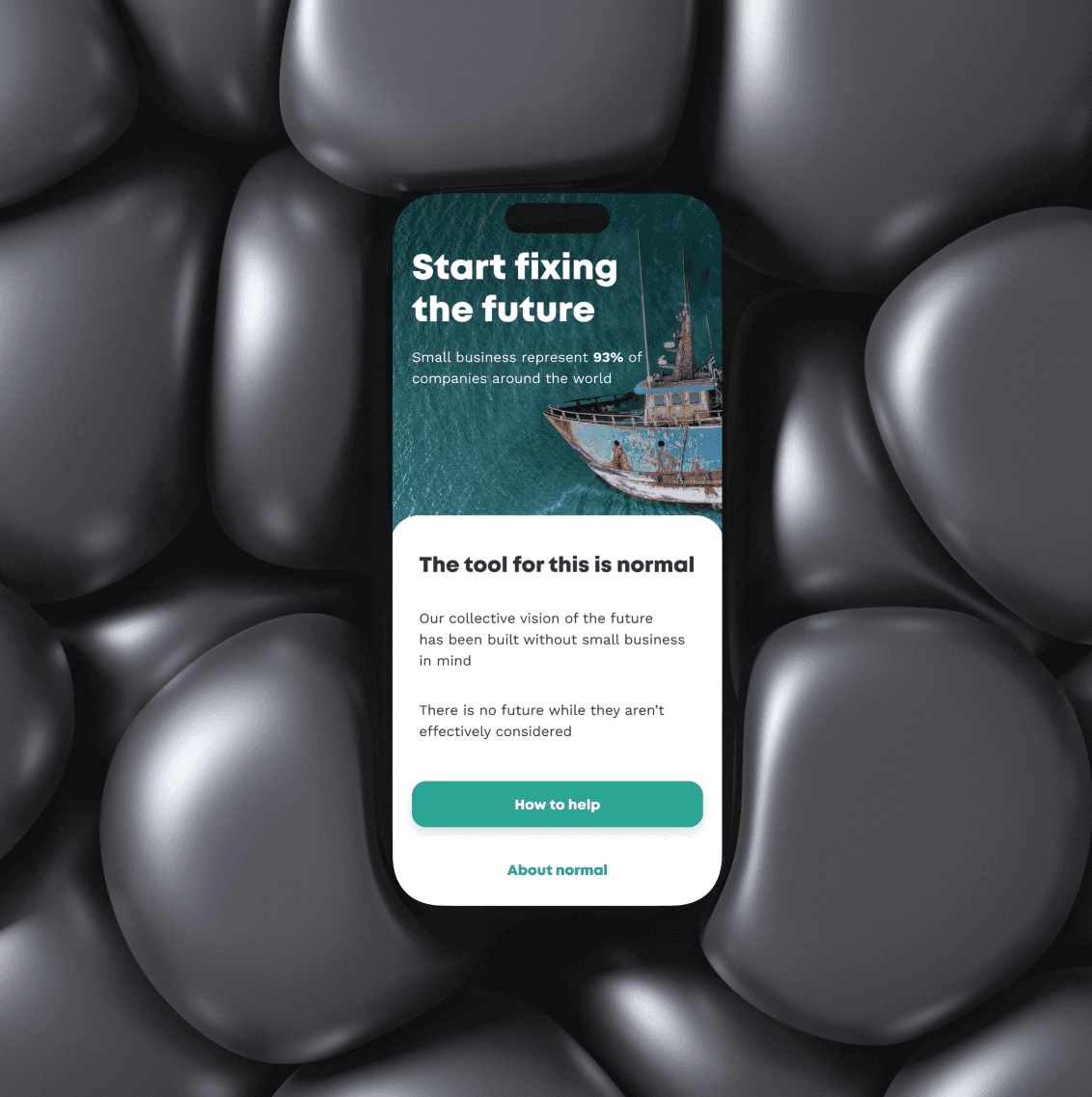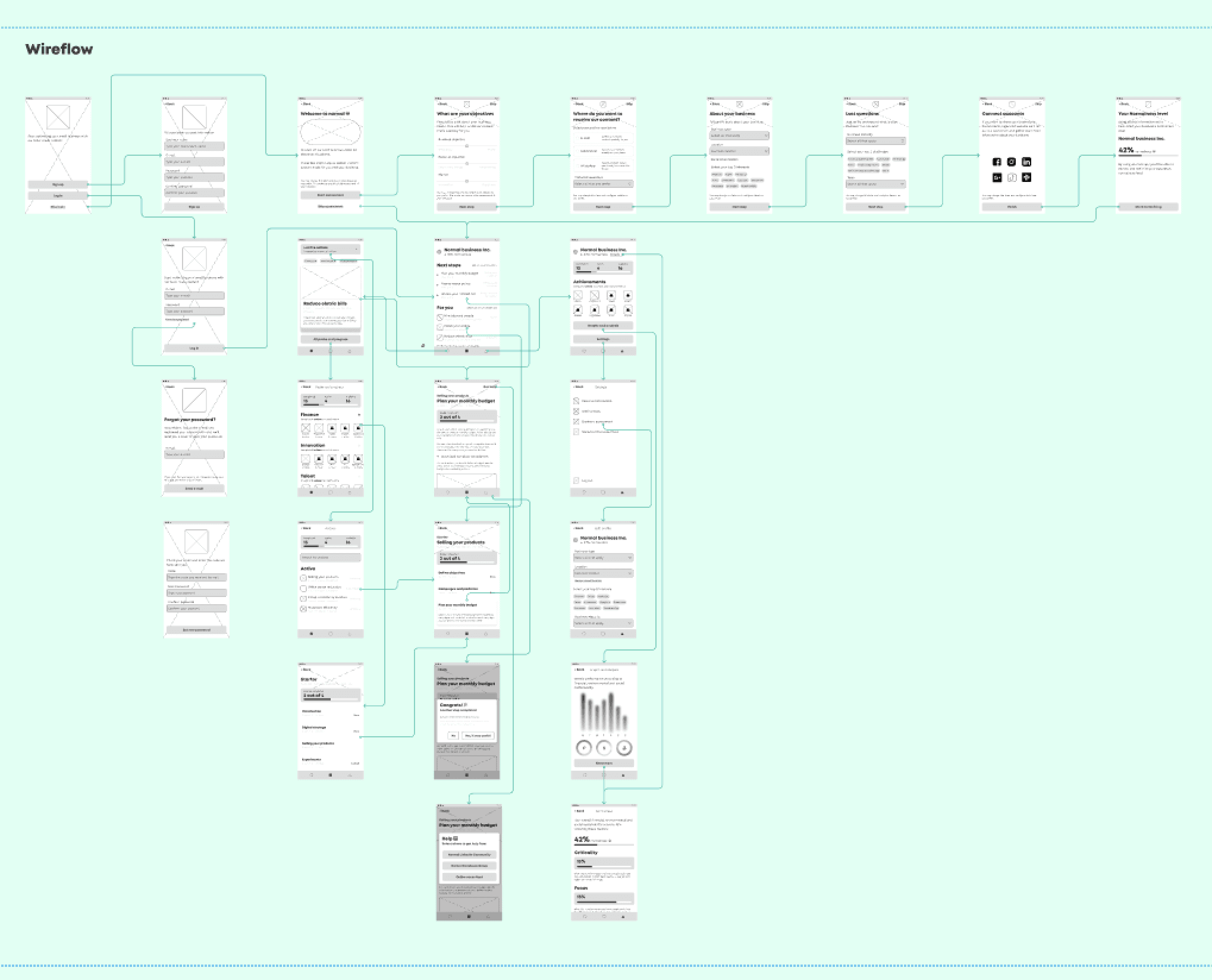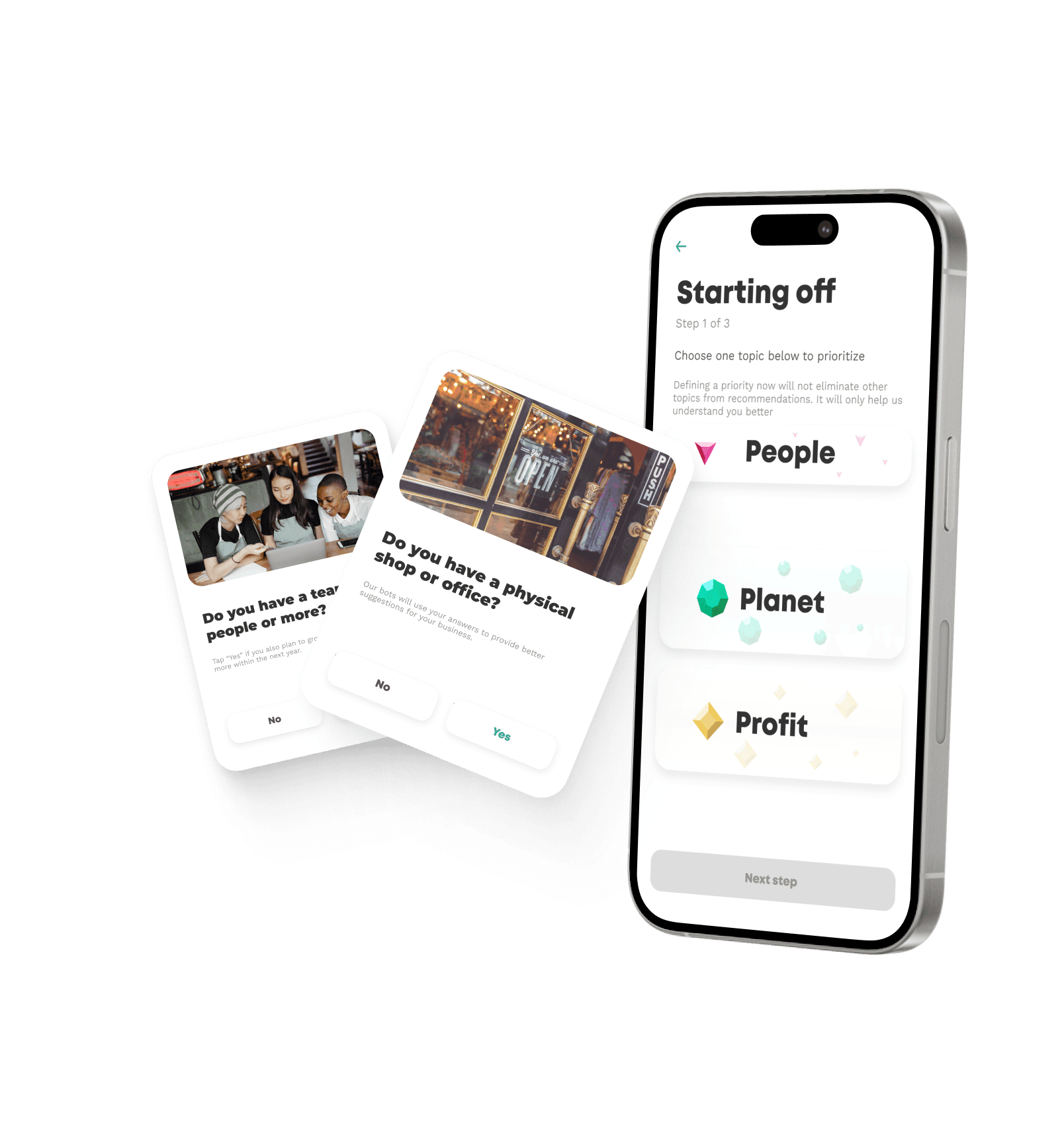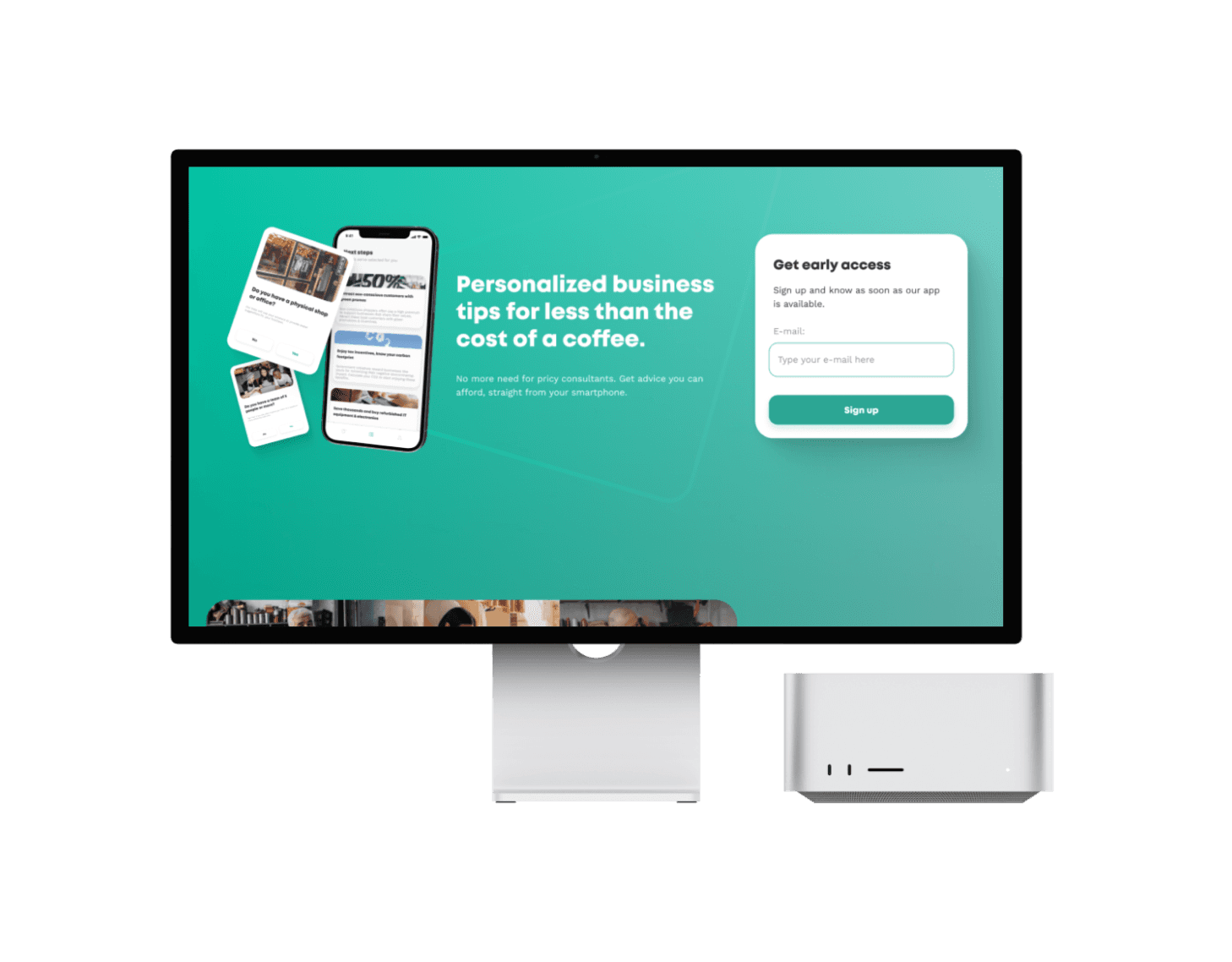Normal Business
SXSW 2022 pitch finalist
Design Lead
Early stage startup
Objectives
Generate value proposition
Explore ways to deliver value to people
Get investments and funding for the company
My role
Establish product development processes
Create research methodology
Define entire product experience from zero
Build the product
Normal Business
SXSW 2022 pitch finalist
Design Lead
Early stage startup
Objectives
Generate value proposition
Explore ways to deliver value to people
Get investments and funding for the company
My role
Establish product development processes
Create research methodology
Define entire product experience from zero
Build the product
Normal Business
SXSW 2022 pitch finalist
Design Lead
Early stage startup
Objectives
Generate value proposition
Explore ways to deliver value to people
Get investments and funding for the company
My role
Establish product development processes
Create research methodology
Define entire product experience from zero
Build the product
In this project, we built a three-track product development cycle consisting of empathizing, discovery, and delivery in this order.

Empathize
Hypothesis-driven discovery phase with different outreach hypotheses being tested in parallel so we could start understanding how to develop a community with people around the world. This led us to the following results:
16
6
200
Interviews
Countries
Surveys answered
This knowledge was transformed into insights and hypotheses that, once prioritized using an Effort x Value matrix, fed our next phase of product development.
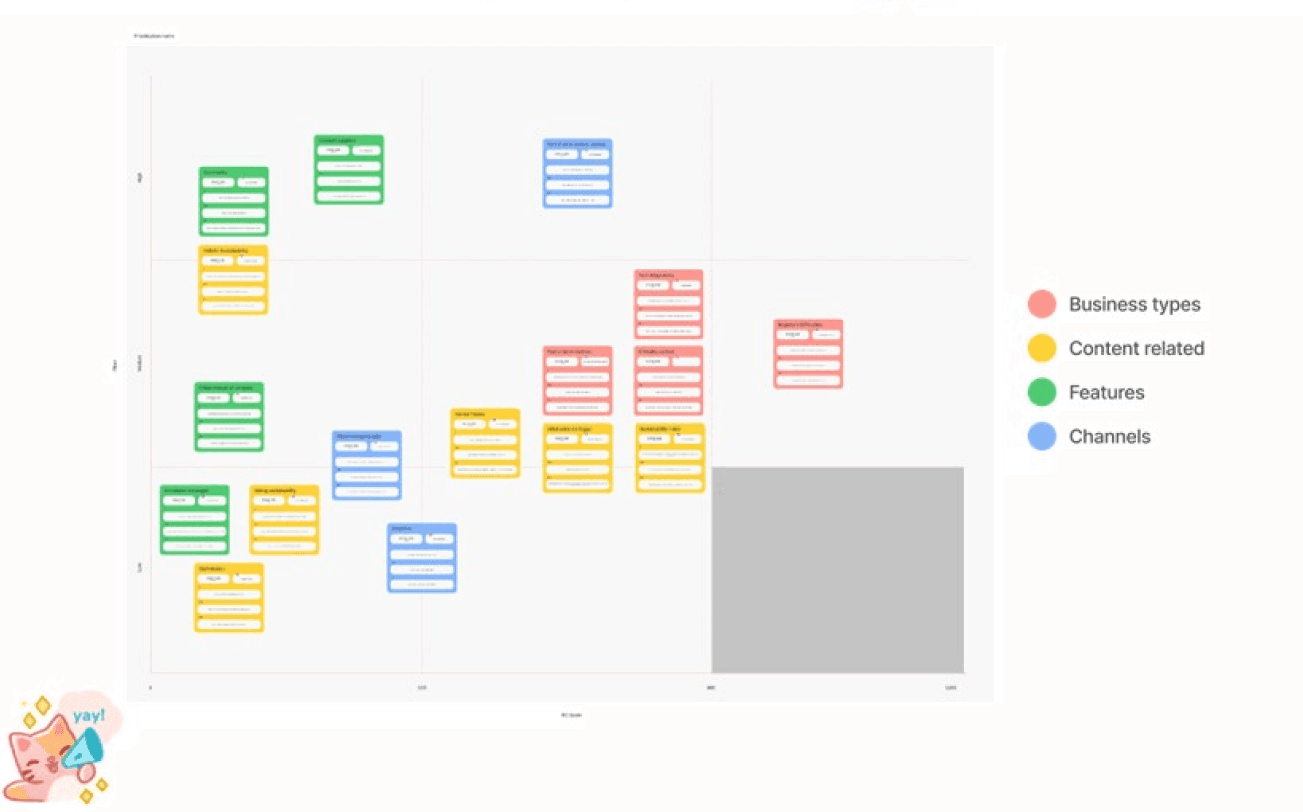
Discovery
As we moved some hypotheses to this phase, results for the 2022 SXSW pitch came in and we were one of the finalists for the “future of work” category.
This meant everything changed and that our plans of continuously building our product based on research-based insights needed to be transformed into a “3 months to have a live product” sort of thing.
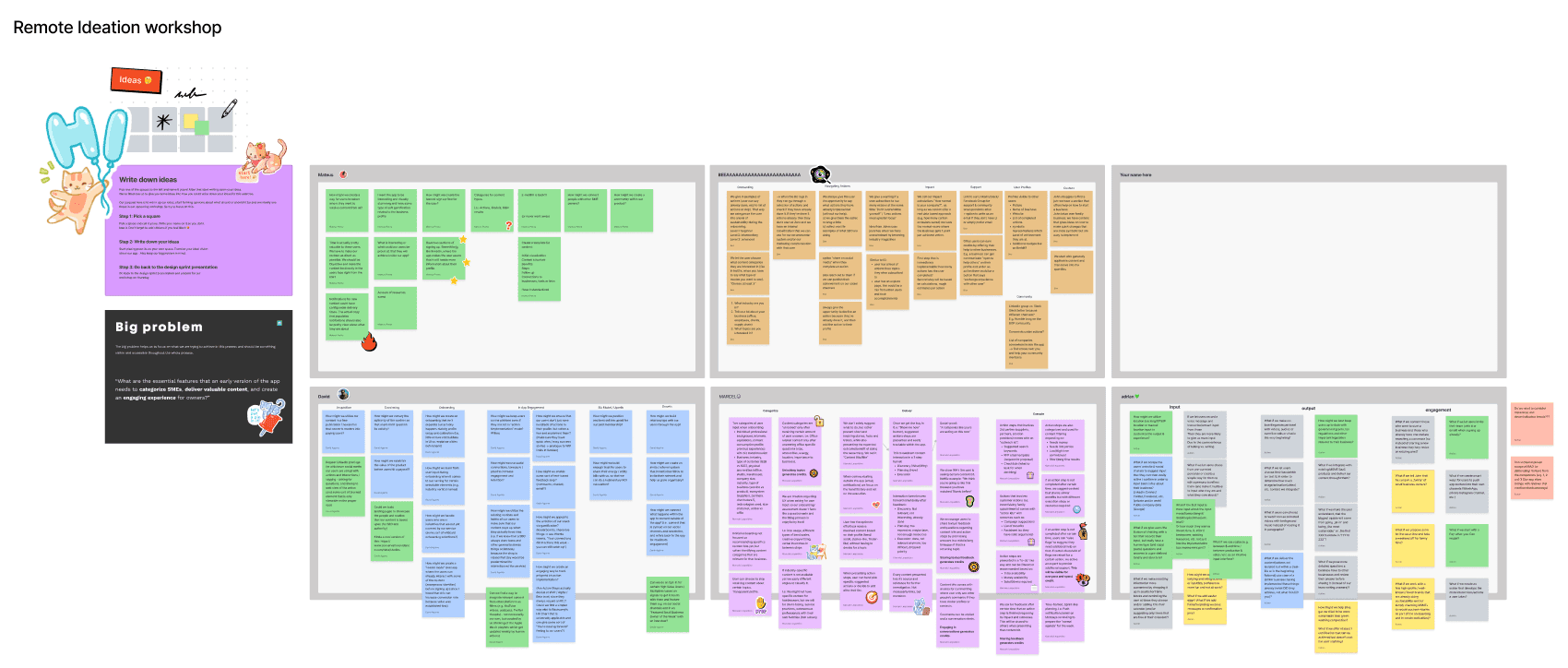
To ramp up development speed and still get the benefits of having a collaborative creative process, we built a custom remote design sprint framework.
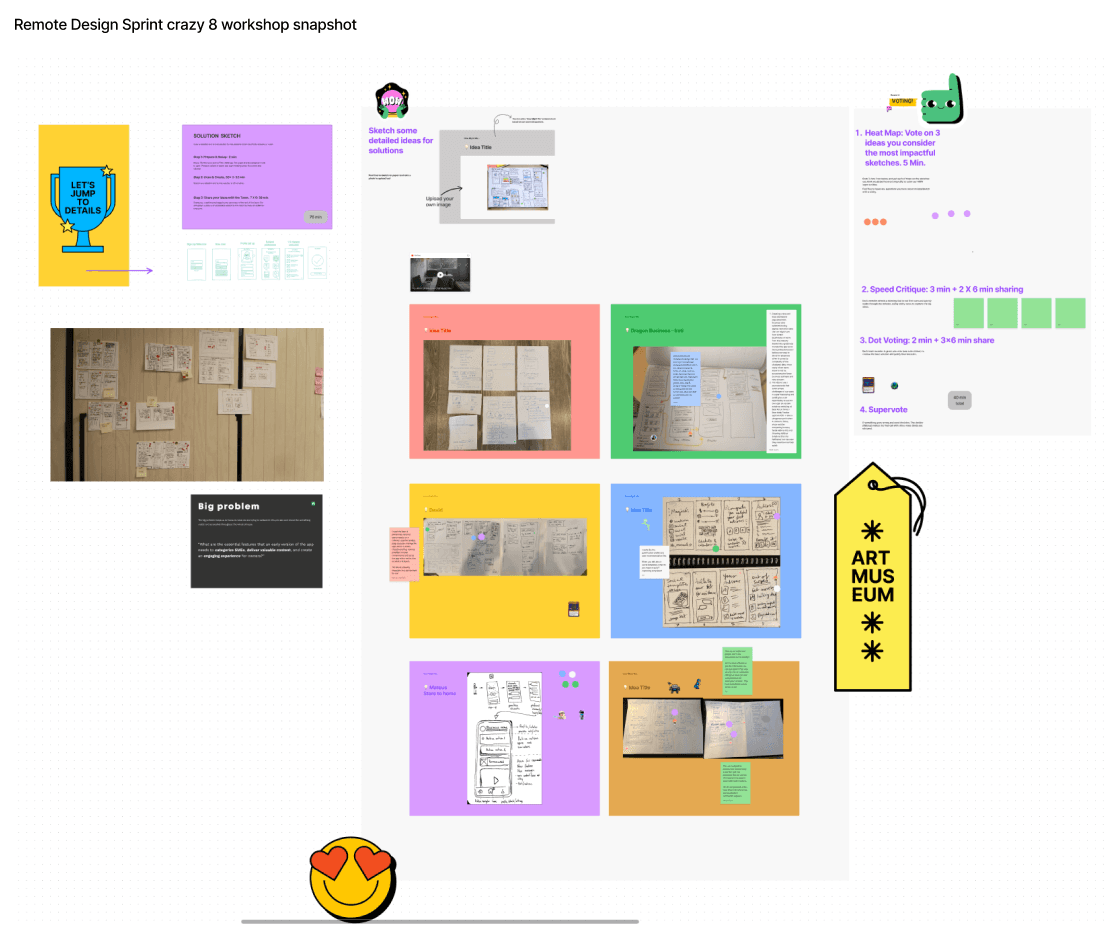
In less than a month we had a full wireflow with all features and product values directly connected to potential users' insights.

Delivery
Preparing design handoff for development was a mixture of refining the first iteration of the wireframes and exploring final ideas for the product’s visual identity.

After building a prototype in Figma, the development of the Android and iOS apps was done using Bravo Studio and other no-code tools.
All our development was made using no-code tools, even the back end. After some tweaks the app was live in both app stores and ready for our pitch presentation at SXSW.

Other branches
Many other initiatives were going on, such as normal.business website and landing pages to start scaling our pilot test.

Every other branch of product development had its development cycle that was individually planned based on the project's priority and objectives. Since we weren't able to have research-driven product development for everything, we use some landing pages to validate our communication with the outside environment and start gaining scale.
The waitlist, as we called it, is one of these other projects, where we directly jumped into creating wireframes, prototyping, and then built it using bubble.io.

In this project, we built a three-track product development cycle consisting of empathizing, discovery, and delivery in this order.

Empathize
Hypothesis-driven discovery phase with different outreach hypotheses being tested in parallel so we could start understanding how to develop a community with people around the world. This led us to the following results:
16
6
200
Interviews
Countries
Surveys answered
This knowledge was transformed into insights and hypotheses that, once prioritized using an Effort x Value matrix, fed our next phase of product development.

Discovery
As we moved some hypotheses to this phase, results for the 2022 SXSW pitch came in and we were one of the finalists for the “future of work” category.
This meant everything changed and that our plans of continuously building our product based on research-based insights needed to be transformed into a “3 months to have a live product” sort of thing.

To ramp up development speed and still get the benefits of having a collaborative creative process, we built a custom remote design sprint framework.

In less than a month we had a full wireflow with all features and product values directly connected to potential users' insights.

Delivery
Preparing design handoff for development was a mixture of refining the first iteration of the wireframes and exploring final ideas for the product’s visual identity.

After building a prototype in Figma, the development of the Android and iOS apps was done using Bravo Studio and other no-code tools.
All our development was made using no-code tools, even the back end. After some tweaks the app was live in both app stores and ready for our pitch presentation at SXSW.

Other branches
Many other initiatives were going on, such as normal.business website and landing pages to start scaling our pilot test.

Every other branch of product development had its development cycle that was individually planned based on the project's priority and objectives. Since we weren't able to have research-driven product development for everything, we use some landing pages to validate our communication with the outside environment and start gaining scale.
The waitlist, as we called it, is one of these other projects, where we directly jumped into creating wireframes, prototyping, and then built it using bubble.io.

In this project, we built a three-track product development cycle consisting of empathizing, discovery, and delivery in this order.

Empathize
Hypothesis-driven discovery phase with different outreach hypotheses being tested in parallel so we could start understanding how to develop a community with people around the world. This led us to the following results:
16
6
200
Interviews
Countries
Surveys answered
This knowledge was transformed into insights and hypotheses that, once prioritized using an Effort x Value matrix, fed our next phase of product development.

Discovery
As we moved some hypotheses to this phase, results for the 2022 SXSW pitch came in and we were one of the finalists for the “future of work” category.
This meant everything changed and that our plans of continuously building our product based on research-based insights needed to be transformed into a “3 months to have a live product” sort of thing.

To ramp up development speed and still get the benefits of having a collaborative creative process, we built a custom remote design sprint framework.

In less than a month we had a full wireflow with all features and product values directly connected to potential users' insights.

Delivery
Preparing design handoff for development was a mixture of refining the first iteration of the wireframes and exploring final ideas for the product’s visual identity.

After building a prototype in Figma, the development of the Android and iOS apps was done using Bravo Studio and other no-code tools.
All our development was made using no-code tools, even the back end. After some tweaks the app was live in both app stores and ready for our pitch presentation at SXSW.

Other branches
Many other initiatives were going on, such as normal.business website and landing pages to start scaling our pilot test.

Every other branch of product development had its development cycle that was individually planned based on the project's priority and objectives. Since we weren't able to have research-driven product development for everything, we use some landing pages to validate our communication with the outside environment and start gaining scale.
The waitlist, as we called it, is one of these other projects, where we directly jumped into creating wireframes, prototyping, and then built it using bubble.io.

